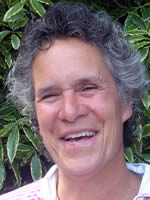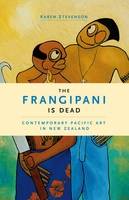Author’s detailed exploration of Pacific art
 Christchurch has had a major influence on the study and development of Pacific art, writes Dr Karen Stevenson in The frangipani is dead.
Christchurch has had a major influence on the study and development of Pacific art, writes Dr Karen Stevenson in The frangipani is dead.
Stevenson, who lectures at the University of Canterbury’s School of Fine Arts, grew up singing about corned beef
in Tahiti, before studying in the United States and moving to Christchurch in 1995. Her book covers the years 1985 to 2000, and reveals an intriguing mix of mediums, ideas and talent.
There was a lot of experimentation,” Stevenson says.
“At the time academics were talking about heredity and this that and the other. The artists were saying:we’re just going to do what we do – that’s who we are. We’re islanders, but we live in urban situations. We’re artists and we’ll take any sort of medium and do what we like with it and just keep pushing it.
Christchurch had a definitive role to play in the growth of Pacific art in New Zealand, she says.
This is where Pacific Underground started – Oscar Kightley and the ‘bro town boys – all of this came out of Christchurch. Scribe – the whole music thing, it all came out of here. A lot of artists say it’s wonderful to work here because you don’t have all of these people looking over your shoulder all the time and you can actually just do your thing. That’s a real positive.
Canterbury was the first university to have Pacific Studies – the first university to teach Pacific art history. Why? Maybe it’s because there’s not all of the competing communities. It seems to have worked,
she says.
New Zealand has a strong connection to the Pacific
, she adds.
I think the reason Pacific Art does so well here is that for mainstream New Zealanders it’s something that they can embrace without feeling that cultural cringe, or that they’re not supposed to like it. When it’s critical, it’s self critical – it’s about the Pacific community – it’s not post-colonial or angry … it’s a lot easier to embrace. That’s allowed Pacific art to flourish.
Long process
The Frangipani is dead by Karen Stevenson. Huia Publishers.
More Pacific art in the library catalogue.
See also
- Art and Design resources at the library
- University of Canterbury School of Fine Arts
The process of the book began in 1995, about a year after Stevenson arrived in Christchurch. Fatu Feu’u was the Macmillan Brown artist in residence – another scheme that gave Pacific art a real boost
- and he encouraged her to write. A lot of conversations, interviews and articles later, it was time to get cracking.
The title of the book is a reference to one of the most clichéd of Pacific images – the frangipani – and came about from a conversation with John Ioane. The hibiscus is used more often, she says, but the image is enshrined in Pacific art because of its use, or overuse, by Fatu Feu’u.
It became overly clichéd. I like to use it as a title that tries to break the stereotype … what are the other issues that are going on besides the pretty flowers?
The Pacific has had a real problem – first it was ‘primitive art’, then it was ‘not art at all actually’; or ‘tourist art’ – there was always these negative labels put on it. Even the cliché that there’s no word for art in their language … You could just say its all art, and it all has different cultural meanings – that’s what gives it value and that’s what continues generation after generation.
There are few books written about Pacific art, something Stevenson hopes to remedy.
There’s very little written on the artists. There’s only a handful of people that are writing but we’ve all got other jobs. It’s really hard to follow through on a book…
Her plan is a book series on each of the major artists – Fatu, Pule, King Kapisi – something that could be added to as time went on. Each book would be about 40,000 words, with 50 images and be an introduction to the artist – not the be all and end all of the artist’s work.
I’m hoping we’ll be able to get that off the ground.
More books in the pipeline
Most Pacific artists live in the North Island, but there are a few working in the South Island, including Johnny Penisula – who Stevenson hopes will be the subject of her next book.
Johnny Penisula is down in Invercargill – he’ll do little itty-bitty things, but he’ll also do huge scale sculptures – he’s been around for 30 years. The first book in my series is going to be on Johnny. Iosefa Leo is in Blenheim, he’s a carver and a very religious man. His work is very sweet – the men have these huge hands and there’s this kind of inner strength. It’s quite wonderful.
Younger artists making names for themselves are Maria Ifopo, Stephanie Oberg and Stone Maka.
Overall, Stevenson says she is very happy with how the book came out – despite not picking the cover image.
I didn’t choose the cover image, but it is so spot on for what the book is about – that inter-generational, island / urban thing … I do like the size and the format. It could have been a real picture book. But to me that wasn’t the point of it. I was really hoping that it could get into universities and be a text as well.
July 2009


